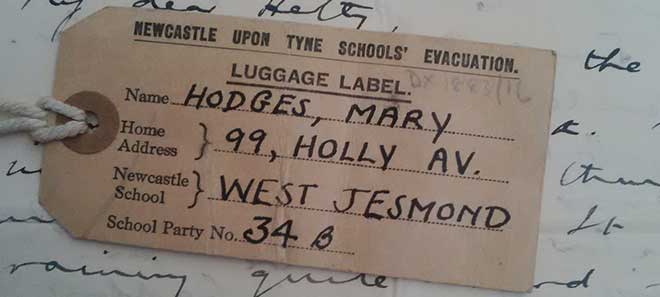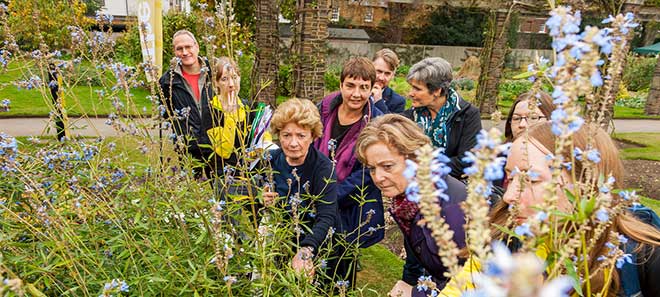
Spiralling Upwards
Climate scientist Ed Hawkins has made a big difference to the understanding of a vital contemporary issue: the upward spiralling of global temperatures.

Climate scientist Ed Hawkins has made a big difference to the understanding of a vital contemporary issue: the upward spiralling of global temperatures.
Dr Hawkins analysed the past 165 years of global average temperatures and created what Mashable described as ‘the most compelling climate change visualisation ever seen’. Dr Hawkins’ animated climate spiral was first published on his blog Climate Lab Book, then via Twitter, where it was picked up and discussed by leading commentators around the world. It went on to form an integral part of the opening ceremony of the Rio Olympics, where it was seen by a TV audience of more than a billion people.
The Climate Lab Book, a blog Dr Hawkins writes as part of his research activities, was already popular, thanks to its accessibility and engagement with scientists and members of the public, but its popularity grew exponentially thanks to the climate spiral. The animation has been seen 3.4 million times from Dr Hawkins’ tweet alone, with many millions more views via social media. Mainstream media were quick to discuss the graphic, while others who have used or mentioned the graphic include Elon Musk, Bernie Sanders and the artist Banksy. The US State Department translated the graphic into several different languages for its online webpages, and it has been used in high-profile conference presentations by senior policymakers, including the Australian Chief Scientist and the Chief Scientific Advisor
for DEFRA.
The aim was to produce an animation which captured the increase in global temperatures over the past 165 years in a novel way and which was not a traditional ‘boring’ scientific graph.


War Child, conceived by Dr Teresa Murjas of the department of Film, Theatre and Television, is a digital project about the Evacuee Archive held by the Museum of English Rural Life (MERL).
The archive consists of written memoirs, oral history interviews and research material relating to former evacuees and war-children gathered by the university’s Research Centre for Evacuee and War Child Studies. The largest resource of its kind outside London’s Imperial War Museum, the archive grew out of the research of Martin Parsons, a now retired academic colleague. Dr Murjas engaged with Professor Parsons’ complex experience as the originator of the archive, and, in War Child, co-created an innovative web-based resource – a mixed-media ‘book’ dramatising Professor Parsons’ story and incorporating audio material, video footage and photography, bound together with text and written stories.
At a time when many children around the world continue to be displaced because of conflict, War Child not only captures aspects of the history of the University and its archives, but also provides an international resource for the public, academics and researchers, museum and heritage professionals and mixed-media creative practitioners. Dr Murjas explores Jacques Derrida’s belief that “the archive is
never closed. It opens out of the future.”War Child is a story about the Evacuee Archive: how it came into being, the man who created it and what he has experienced. War Child engages with and documents the life of this archive, to lyrically evoke its qualities and – virtually – extend its scope.

Ancient Rome has come alive thanks to the work of Dr Matthew Nicholls and his creation of the world’s most detailed digital model of the ‘Eternal City’.
Virtual Rome, a digital modelling project involving undergraduate and postgraduate students, is now an important part of the teaching and research life of the Department of Classics. Springing from Dr Nicholls’ lifelong interest in Rome, Virtual Rome’s 3D historically accurate digital model can generate flythroughs, animations, live interactive models to explore, and 360 degree panoramic images. It can be used in a huge variety of teaching, outreach, and impact contexts.
Virtual Rome was popularised by an innovative Massive Open Online Course (MOOC) on the FutureLearn platform, which allowed users to move seamlessly between the model and real-life film footage of contemporary Rome. Featuring the world’s first live deployment of 3D user-manipulable content within a MOOC, it attracted thousands of learners globally, and was named by ClassCentral as one of the top ten most popular MOOCs worldwide in March 2017. Virtual Rome also won first place in the Guardian and Higher Education Academy’s University Awards 2014, while Dr Nicholls is also a British Academy Rising Star Engagement Award winner, working on digital visualisations with industry and heritage sector partners.
The project has been disseminated by blogs, workshops, videos, media appearances, commercial licensing and best-selling books.
It is helping to popularise Classics, illustrate the educative benefits of knowledge of the ancient world, contribute to pedagogical innovation and provide humanities students with transferable skills. Overall, Dr Nicholls’ work has reached millions of people worldwide.
Virtual Rome offers an immersive and unique virtual tour of what the Roman poets Ovid and Tibullus called ‘the Eternal City’, without even leaving your living room. Everyone is invited.

How best to raise awareness of the importance of pollinators to food security? And how to ensure that threats they face as ecosystem providers are countered?
For research fellow Dr Deepa Senapathi, the answer was by hosting a number of practical outreach events combining multiple complementary projects undertaken by Dr Senapathi and her team. They have engaged in 21 public, practitioner and policy events in the past three years, all of which have enhanced the reputation of individual researchers, their research division, and the university.
Outreach events have been local, national and international, and include more than 30 interactive presentations to grower associations, beekeepers, agronomists and industry partners. Dr Senapathi’s team were invited onto expert UN and EU panels, participated in working groups (not least, a DEFRA pollinator event at the 2015 Milan Expo), made numerous media appearances, and, working with Professor Simon Potts and colleagues, showcased their research at Kew Gardens in October 2016. This major day-long event saw the 26-strong team hold exhibitions, interactive games, practical demonstrations and myth-busting sessions. Dr Senapathi and her team have also produced short video clips, hosted on the University’s YouTube channel, to inform a wider audience.
Our objective is to raise awareness and inform policy makers, practitioners, industry and the general public about our research findings. By doing so, we can work together to find common solutions to reduce pollinator declines – with benefits for the environment and the supply of our food.